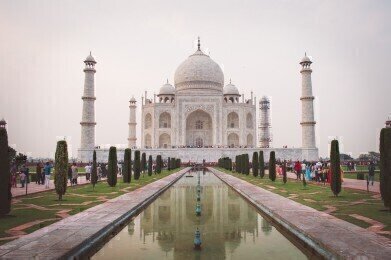Waste Management
Taj Mahal Goes Litter-Free
Jun 16 2018
The Indian government have pledged to clean up 100 historic monuments around the country, including its most iconic building, the Taj Mahal. In an announcement in the city of Agra, Minister of State for Environment, Forest and Climate Change Mahesh Sharma declared the government’s commitment to making the country’s most important sites litter-free.
An uphill battle for Indian authorities
Attracting more than seven million visitors every year, the Taj Mahal is a centuries-old mausoleum which acts as something as a figurehead for the country. However, the strain which this level of tourism places upon the monument means that it can become victim to wanton littering, which harms the environment and makes the beautiful façade of the building look unsightly.
That problem is only exacerbated by pollution caused by tropical rain storms, which can lead to litter, silt and other unwanted contaminants being discharged into the sea along with all the other runoff. Meanwhile, air pollution has also affected the building's exterior, with brown, green and yellow spots on its surface thought to be caused by dirty airways.
The Indian Supreme Court responded to that particular crisis by ordering the government to take appropriate action. Now, it appears the authorities have gone one further by pledging to clean up the whole exterior of the building, as well as 99 other important monuments across the country.
A four-pronged approach
“With our pledge today, India is sending a message today to the world that we can beat plastic pollution,” said Mr Sharma in his statement. “We are committed to making the peripheries of 100 historic monuments in India litter-free.” The commitment hinges upon four key tenets:
- Keeping a 500m periphery around the Taj Mahal absolutely free of all litter
- Collecting all plastic waste in the vicinity of the monument to be taken away and recycled
- Encouraging tourists, visitors and pilgrims to the site to engage in sustainable practices
- Raising consumer awareness of the damaging impact of single-use plastics
That last point in particular is salient right now. Earlier this month, the country’s prime minister Narendra Modi announced that India would phase out single-use plastics completely by 2022. The ambitious target is in line with a number of proposals put forward by the government to clean up the nation’s polluting reputation.
Universal support
The announcement was met with support from figures both within and without India. Bollywood actress Dia Mirza threw her weight behind it, saying: “The Taj Mahal is a symbol of love and with this declaration, we want to send out a message to the world about the love we need to give back to our Earth by joining the movement to beat plastic pollution and reducing our consumption of single-use plastic.”
Meanwhile, the head of UN Environment Erik Solheim was similarly encouraging in his praise for the idea. “The Taj Mahal is a globally-recognised symbol of the beauty of India, so it's all the more important that Agra sends a message around the world that enough is enough when it comes to the ugliness of plastic pollution!” he said. “Taking action is about keeping the beauty of our planet intact.”
Events
Apr 22 2024 Hannover, Germany
Apr 23 2024 Kuala Lumpur, Malaysia
Apr 24 2024 Sao Paulo, Brasil
May 05 2024 Seville, Spain
May 13 2024 Munich, Germany













